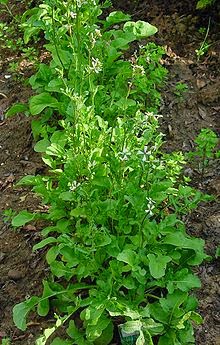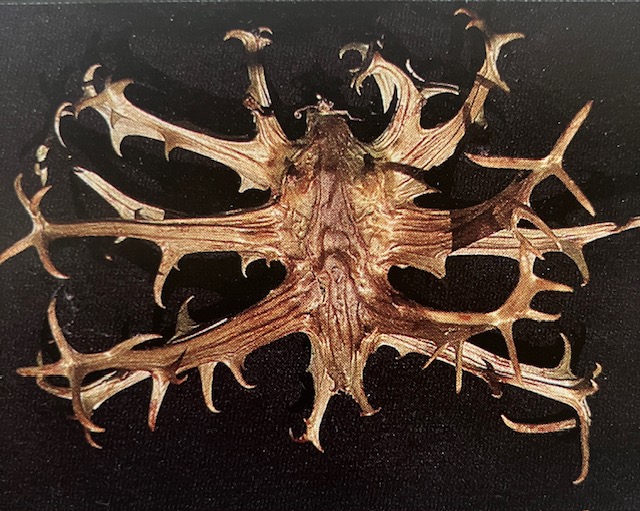Whether you’re an experienced gardener or just
starting, growing your own herbs and vegetables can be a rewarding experience.
Not only does it provide you with fresh, flavorful ingredients, but it also
allows you to connect with nature and enjoy the satisfaction of nurturing
plants from seed to harvest. In this post we’ll explore the planting, growing,
and culinary uses of six delicious plants: Rainbow Swiss Chard, Arugula, Sweet
Pea, Strawberries, Parsley, and Chives.Arugula
Planting:
Arugula prefers cool weather and grows best in well-draining soil. Plant seeds
¼ inch deep and 1 inch apart in rows spaced 6-12 inches apart. It can be grown
in full sun to partial shade.
Growing: Keep the soil
consistently moist, but avoid overwatering as it can lead to root rot. Arugula
grows quickly and can be harvested in as little as 4 weeks. Harvest by cutting
the leaves when they are young and tender, before the plant starts to flower.
Using: Arugula has a
peppery flavor that adds a delicious kick to salads, sandwiches, and pasta
dishes. It can also be used as a garnish for soups and pizzas.
Arugula and Pasta4 cups
arugula leaves washed, drained and trimmed1 pound uncooked rigatoni or other small pasta2 cups chopped fresh or canned tomatoes3 garlic cloves pressed or minced2 tablespoons olive oil1 bay leaf2 tablespoons chopped fresh basil or 2 teaspoons driedsalt & red or black pepper to tasteTear
arugula into generous bite-sized pieces. Lay the leaves in a large, heat
resistant, shallow serving dish. Cook pasta in a large pot of boiling water
until it reaches that barely tender stage. Remove and drain. While the pasta is
cooking prepare this easy tomato sauce: Heat olive oil and stir garlic around
until softened and fragrant. Add tomatoes and seasonings and heat to a simmer.
Remove bay leaf. Pour the hot, drained steaming pasta, over the bed of
arugula. Spread the tomato sauce over the pasta. Let a few bright green
leaves show around the edges of the pasta. Do not toss together. Serve with
grated parmesan cheese. Serves 4-6.
Chives
Planting:
Chives are a perennial herb that grows well in containers or in the ground.
Plant them in well-draining soil in a sunny location. Space the plants 6-8
inches apart in rows spaced 12 inches apart. They can be started from seed, but
I recommend getting nursery plants to be able to harvest sooner.
Growing: Keep the soil
consistently moist and fertilize yearly with a balanced fertilizer. Harvest the
leaves as needed, cutting them down to the base of the plant. Chives can be
harvested throughout the growing season.
Using: Cut the flowers
in spring and use in salads or to create onion flavored vinegar. Chives have a
mild onion flavor that pairs well with a variety of dishes. Use them fresh as a
garnish or add them to salads, soups, and omelets for extra flavor.Spring Herb Popcorn 1/2 cup popcorn kernels 2 tbsp butter melted, can sub olive oil 1/4 cup fresh dill chopped 1/4 cup fresh chives chopped
SSea salt to tastePop the popcorn kernels using an air popper or other device. When the popcorn is finished, transfer to a bowl. Drizzle with melted butter or olive oil. Shake the bowl
to distribute the butter or oil more evenly. You will need to do this before adding the herbs so that they
have something to stick to and won’t fall to the bottom. Add the fresh herbs and shake the bowl again.
Add sea salt to taste, and enjoyParsley
Planting: Parsley
is a biennial herb that is best grown from nursery plants, as the seed is difficult
to germinate. Plant plants 6-8 inches apart in rows spaced 12 inches apart.
Parsley prefers well-draining soil and full sun to partial shade.
Growing: Keep the soil moist,
but once a starting fertilizer, it should do well if the soil is rich without
any additional fertilizer. Harvest the outer leaves as needed, leaving the
inner leaves to continue growing. Parsley can be harvested throughout the
growing season. Although a biennial, it should be treated as an annual and
removed from the garden at the end of the season.
Using: Parsley is a versatile herb to use fresh or
dried. Fresh parsley is very rich
in Vitamin A and potassium. It is moderately rich in Vitamin C, calcium, folic
acid, and phosphorous. It is also a good source of dietary fiber. It adds
flavor to soups, stews, sauces, and salads. It can also be used as a garnish
for a decorative touch and to freshen breath.Creamy Parsley Salad Dressing1/2 cup vegetable oil1/3 cup finely chopped fresh parsley leaves3 scallions, finely chopped1/2 tsp salt1/2 tsp pepper2 Tbls sour cream (or plain yogurt)Combine all ingredients except sour cream in food processor, blender or bowl and mix well. With machine running (or using whisk if preparing by hand), slowly add sour cream, blending thoroughly. Refrigerate in an airtight jar and shake well before serving.
Rainbow Swiss Chard
Planting:
Rainbow Swiss Chard is a cool-season crop that thrives in well-draining,
nutrient-rich soil. Plant seeds ½ inch deep and 2-3 inches apart in rows spaced
12-18 inches apart. Ensure the plants receive at least 6-8 hours of sunlight
per day.Growing: Keep the soil
consistently moist but not waterlogged. Thin the seedlings to 6-8 inches apart
once they reach a few inches in height. Mulch around the plants to retain
moisture and suppress weeds. Harvest by cutting outer leaves when they reach
6-8 inches tall, leaving the inner leaves to continue growing.
Using: Rainbow Swiss
Chard can be used in a variety of dishes, from salads and soups to stir-fries
and omelets. Its colorful stems are edible and add a vibrant touch to any dish.
Sauteed Swiss Chard with garlic1 bunch of Swiss chard, approximately 6 to 8
stems1 tablespoon olive oil3 garlic cloves, minced¼ cup waterkosher salt, to taste
Prep the Swiss chard. Remove the stems at the
bottom of the leaves and slice them up. Roll the leaves into a cigar-like shape
and slice across horizontally into one-inch wide strips. Cook the garlic and
stems. Heat the olive oil in a sauté pan on medium heat. Add the minced
garlic and sauté for 30 seconds. Then, add the water and chard stems and cook
for 1 to 2 minutes, until softened. Add the leaves. Cook for an additional
4 to 5 minutes, until the chard leaves wilt down. Before serving, sprinkle with
kosher salt, to taste.
Strawberries
Planting: Strawberries are
perennial plants that can be grown in containers or in the ground. Plant them
in well-draining soil in a sunny location. Space the plants 12-18 inches apart
in rows spaced 2-3 feet apart. There are three types: June-bearing strawberries
produce a large, concentrated crop in mid-June to early July; Ever-bearing
types produce two crops, one in early summer and the second in early fall; Day
neutral plants produce fruit throughout most of the growing season.
Growing: Keep the soil
consistently moist and mulch around the plants to suppress weeds and retain
moisture. Remove any runners to encourage the plants to focus on fruit
production. Harvest the berries when they are fully ripe and red. The June-bearing
produce the largest yield per season, but in a short period of time. The plants begin flowering in May with fruit
appearing about four weeks later.Using: Strawberries are
delicious eaten fresh, but they can also be used in a variety of desserts,
jams, and sauces. They pair well with chocolate, cream, and other berries.Lemony Strawberry Butter • 1/2 cup (1 stick) softened unsalted butter• 1 1/2 tablespoons sugar• 4 tablespoons minced strawberries• 1 teaspoon minced fresh lemon balm• 1 teaspoon minced fresh lemon verbenaCombine all the ingredients. Keep refrigerated for up to 5 days. it is great on scones and biscuits..Sweet Pea
Planting: Sweet
Peas are a climbing plant that requires support such as a trellis or fence.
Plant seeds 1 inch deep and 2 inches apart in rows spaced 12 inches apart. They
prefer full sun but can tolerate partial shade.
Growing: Keep the soil
consistently moist and provide support for the vines to climb. Pinch off the
growing tips of the vines to encourage branching and more flowers. Harvest the
pods when they are young and tender for the best flavor.
Using: Sweet Peas can be
eaten raw or cooked. Add them to salads, stir-fries, or pasta dishes for a
sweet and crunchy texture. Sweet Pea Guacamole
1 clove garlic, minced2 cups fresh green peas3 tablespoons lime juice3 tablespoons olive oil¼ small red onion, finely chopped2 jalapeños, minced ⅓ cup chopped cilantrotortilla ships, raw vegetables, or crackers
Sprinkle a pinch of salt over garlic and mash into a paste
using the side of your knife. Add mashed garlic to a food processor with the
peas, lime juice, and a generous pinch of salt. Pulse mixture until a coarse
purée forms, scraping with a rubber spatula occasionally. With motor running,
stream in olive oil and blend until smooth. Taste, and adjust seasonings. Add jalapeño, onion, and cilantro. Pulse just to incorporate. Serve guacamole
with chips, vegetables, or crackers.
Growing your own herbs and vegetables can be a fun and
rewarding experience. Whether you have a large garden or just a few pots on a
sunny balcony, these six plants are sure to add beauty and flavor to your home.
Experiment with different varieties and recipes to discover the joys of
homegrown produce!


